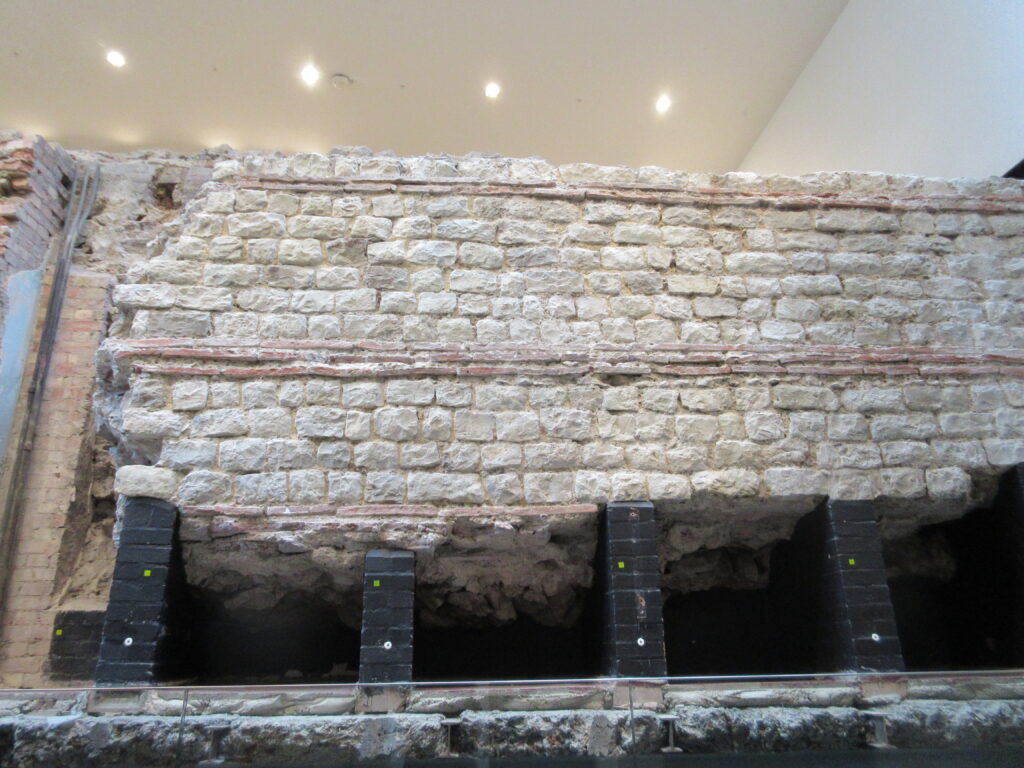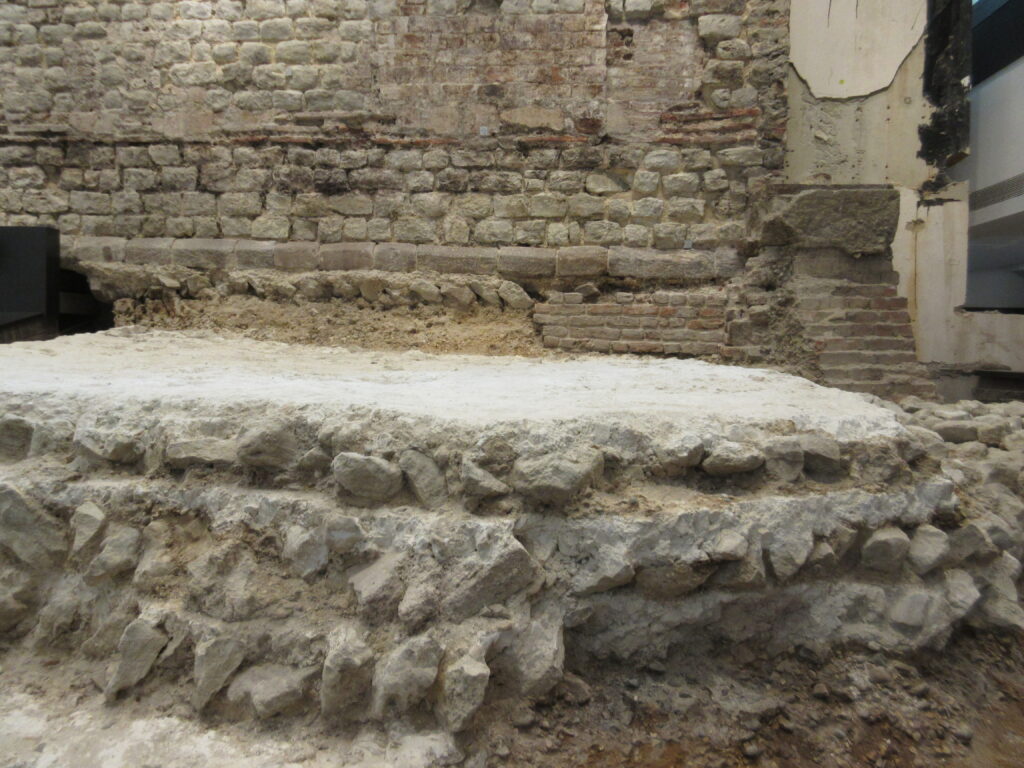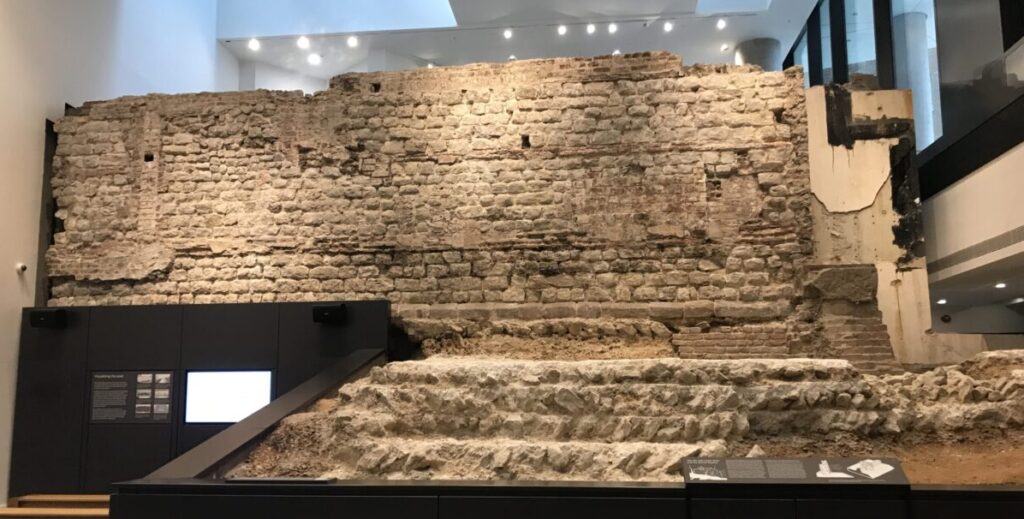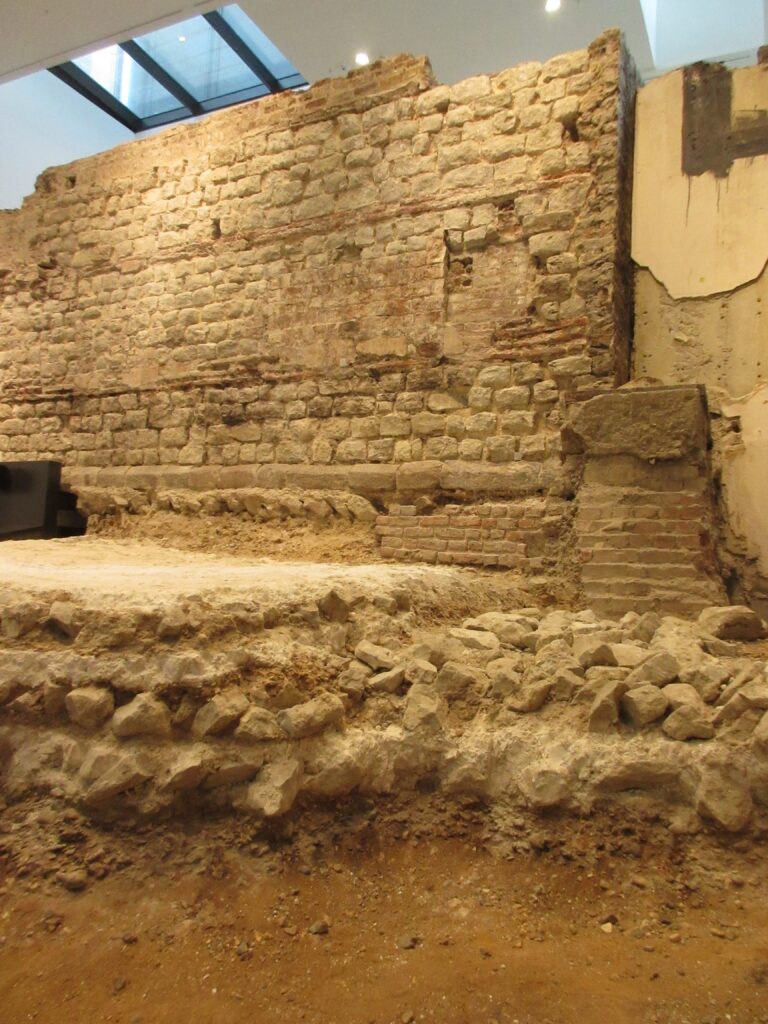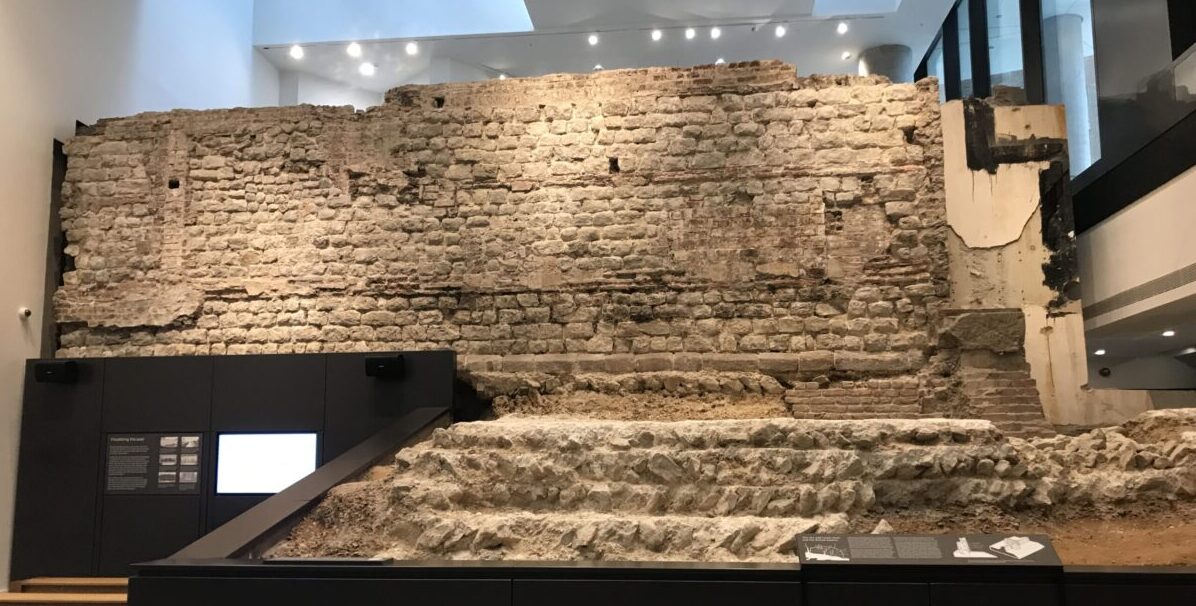
Typical, you wait ages for a post about Roman London, then three come along at once. After the Mithraeum and the Billingsgate bath house, here’s a bit about the wall that the Romans built around their city.
Right by Tower Hill station there is an extant section of the Roman wall, a few dozen metres of the colossal building project that encompassed the whole of the city of Londinium on the north bank of the Thames.
Built around 200CE, it ran for 2.5 miles (about 4km), meeting the river where the Tower of London is today (William the Conqueror had the Tower built with its ‘back’ to the wall), heading north and sweeping around (you can plot the line of it by its ‘gates’ – Aldgate, Bishopsgate, Moorgate, Aldersgate, Cripplegate, Newgate and Ludgate) to meet the river again close to where we now find Blackfriars Bridge. A later extension of the wall along the river front completed the circle.
The wall was 6 metres (20 feet) high, with a deep and wide ditch on the external side. It comprises two ‘sides’ of kentish ragstone with a space in between that was infilled with rubble bound with mortar. Horizontal layers of red tiles were placed every few feet up to help bond the rubble core to the ragstone sides.
The wall fell into decay in the anglo-saxon period until repaired under King Alfred, and it was then incorporated into the medieval wall that defined the City well into the 16th century.
Walk north from the section by Tower Hill and then through the courtyard of the Royal Leonardo Hotel on Cooper’s Row and one will be treated to the sight of about 50 metres of wall where one can clearly see both the original Roman structure and the Mediaeval additions. (see images below)
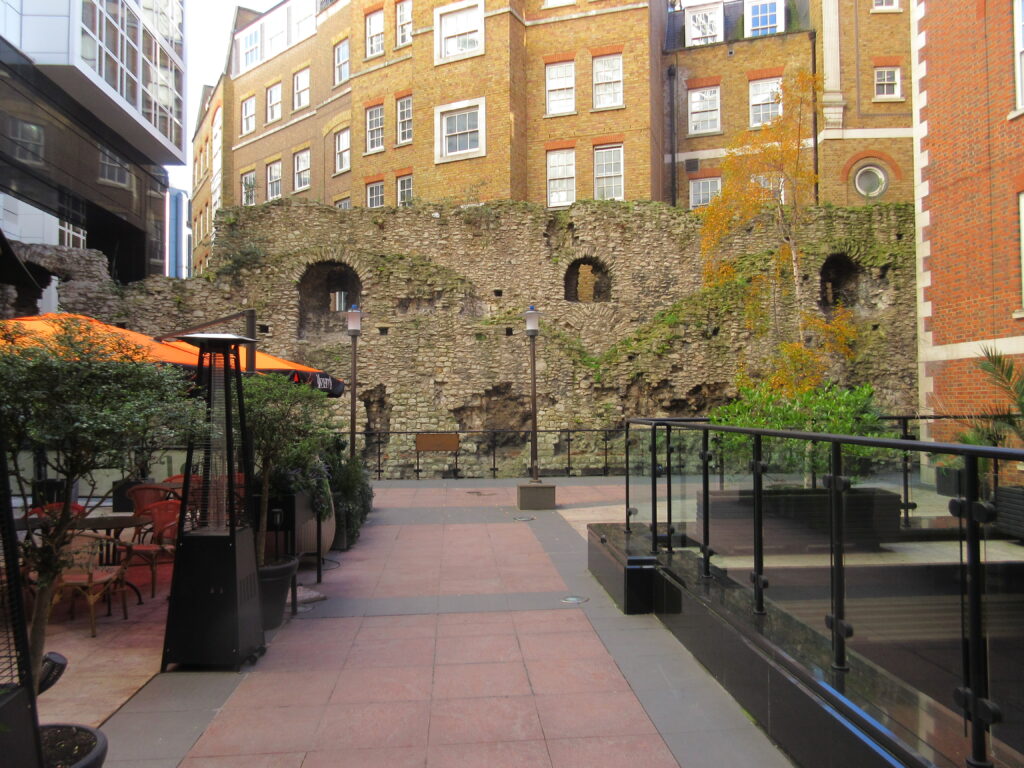
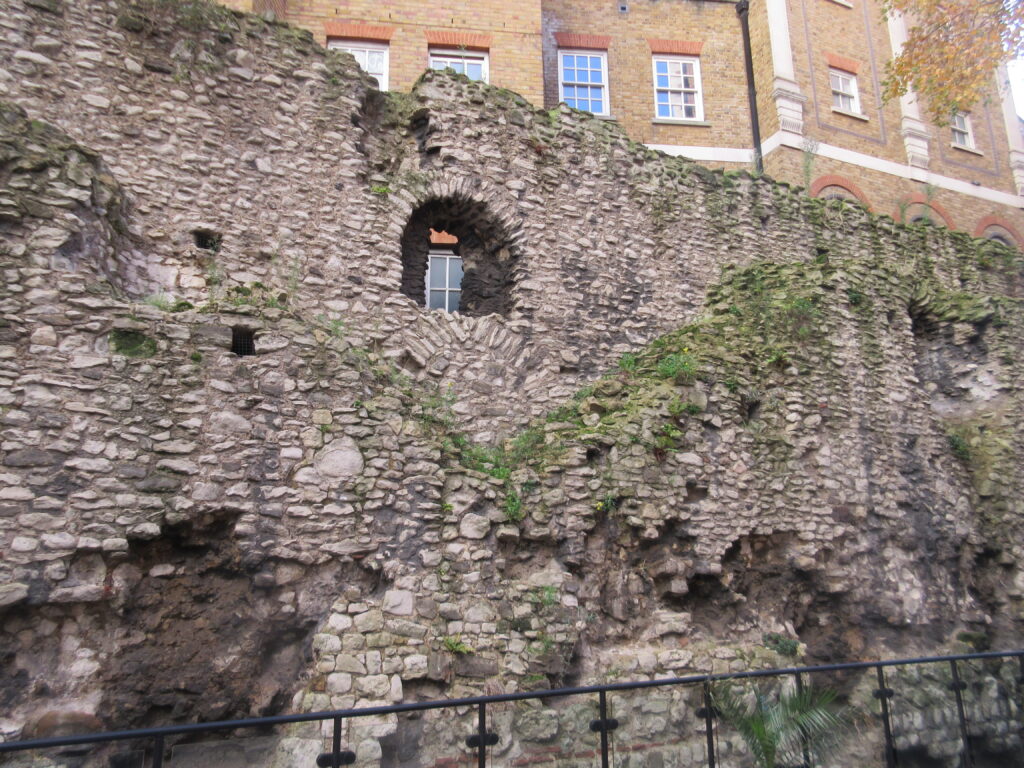
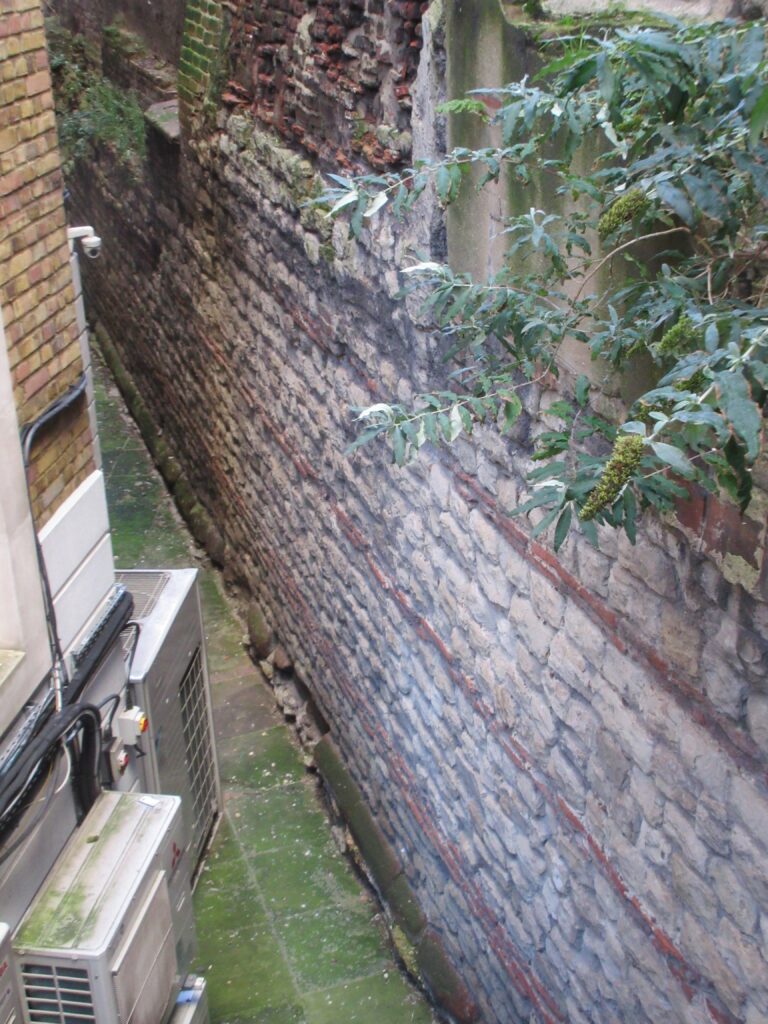
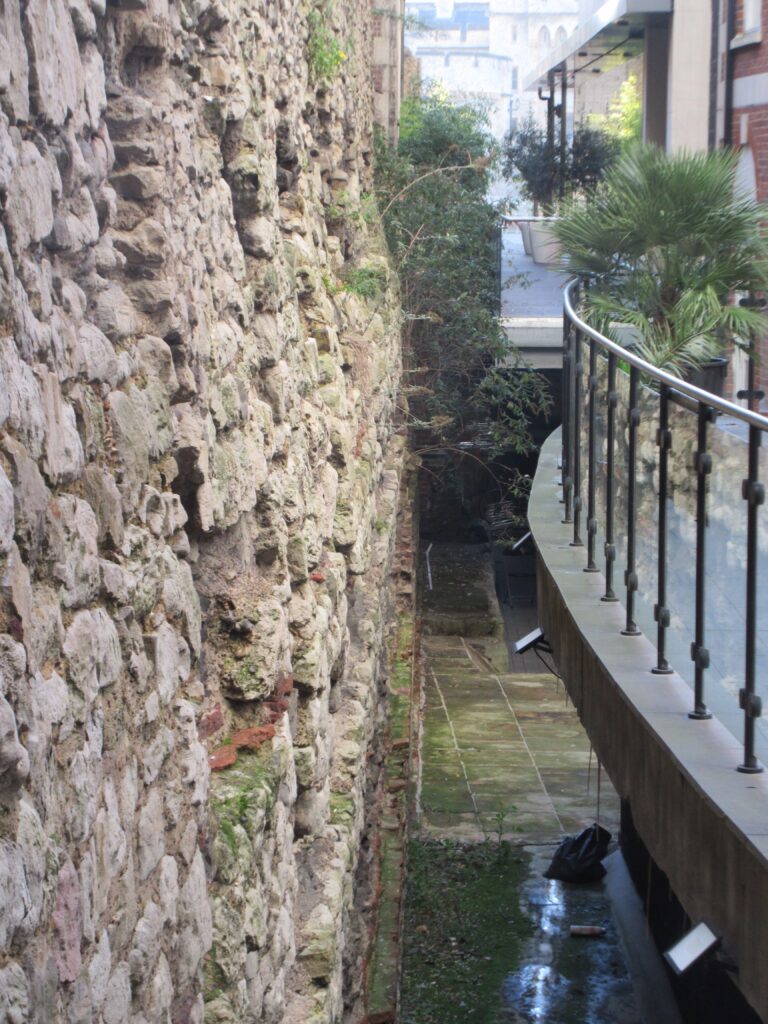
There are other sections that are visible along the road called London Wall (running from Moorgate to the even older Roman fort near the old Museum of London). There’s also a fantastic piece of it in the City of London underground car park behind Guildhall.
I’ll try and come back to those other parts of it in later posts, because the point of this one was to tell you about another section that is now freely accessible thanks to a new development at Vine Street, a few hundred metres up from Cooper’s Row.
Descend the stairs into the space at what is now the Urbanest City student accommodation and one can see part of the wall (which had, until the 1970s, simply been incorporated into the structure of a warehouse) along with finds from the site, a short animation that contextualises the building of the wall and its later history, and an explanation of how this section survived, and the buildings that were constructed on, around and over it in the past 500 years.
One can see both sides of the wall – ‘internal’ to the city and the external face that would have been seen by those arriving to Londinium – as well as the foundation of a Roman bastion. These were extra defences added to the eastern (external) part of the wall in the 4th century from which catapults or ballistas would have operated.
It’s a very well done exhibition (there’s even an onsite cafe), and although it’s not busy (for a time I was the only visitor), their website says that ‘advance booking is essential’ – which you can do for free here.
